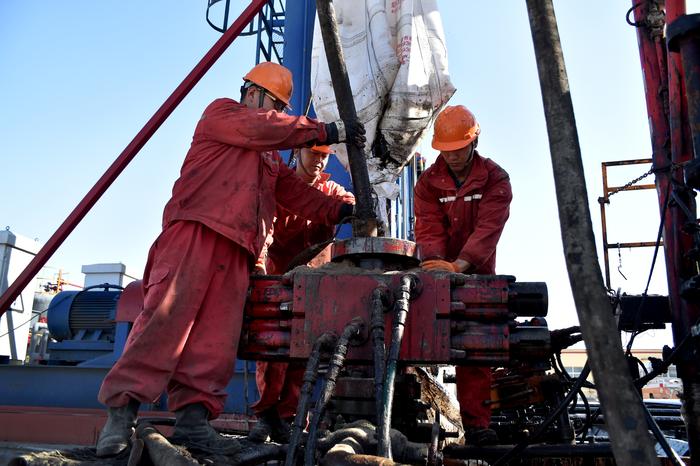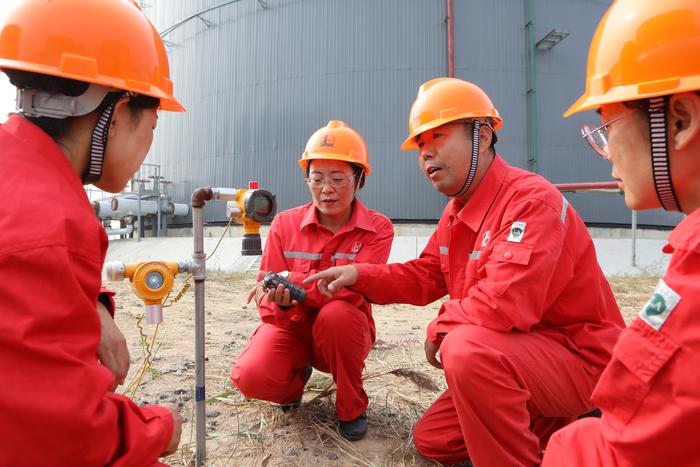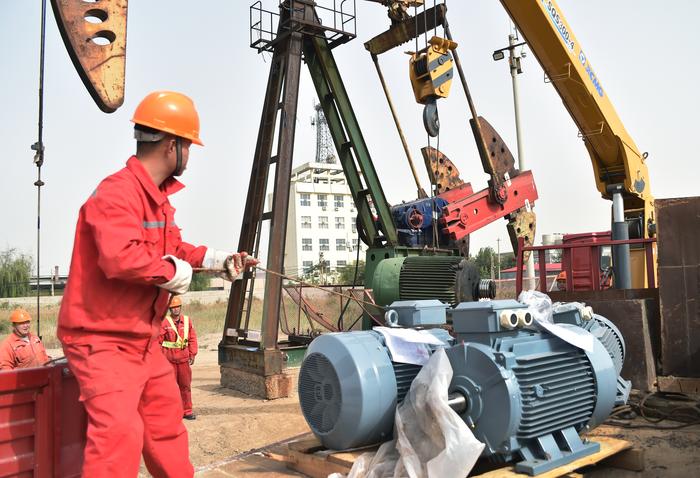|
| 2019-11-07 来源: 中国石化新闻网 |
| 石化新闻 |
|
中国石化新闻网讯 据钻机地带网站11月5日消息称,尽管石油需求在21世纪30年代中期从每天1亿桶增加到1.1亿桶,石油公司仍在响应减少碳足迹的广泛呼声。实际上,石油和天然气将推动全球GDP增长,帮助发展中国家人民摆脱贫困。但是,为了保留社会经营许可证,该行业必须对其排放进行严格控制。在这里,我们概述了一些行业战略,以减少从油气钻探到下游运营的碳足迹。 在美国石油协会(API)及其环境伙伴计划的支持下,美国的石油公司已经签署了自愿协议,以减少从油井、管道和其他陆上生产资产的温室气体甲烷的泄漏。实际上,这意味着公司将把重点放在检测泄漏、安装控制装置以减少泄漏,以及努力减少生产液体的天然气井的排放。 此外,埃尼、埃克森美孚、BP和壳牌等国际石油巨头与跨国机构和环保组织一起签署了类似的减排协议。减少甲烷向大气的泄漏是该行业推动将全球气温上升控制在2度以内的关键因素。 海上钻井平台由化石燃料提供动力,但是随着Equinor率先使用可再生能源为海上钻井平台提供动力,这种情况可能很快就会改变。其中一项提议涉及通过海底电缆将其部分海上石油钻井平台与挪威大陆的电网连接起来。但是,当前有一项有希望的计划旨在利用浮动风电场为海上钻机提供动力。由11台涡轮机组成的88兆瓦的浮动风电场,将为北海的两个Snore和Gullfaks油田的平台供电,这是世界上第一个此类项目,也是最大的浮动风力发电项目。 埃尼也在使其下游业务变得更加环保。例如,该公司已将其在意大利的两家炼油厂—吉拉(Gela)和威尼斯(Venice)—改为使用植物油。据该公司介绍,威尼斯炼油厂是世界上第一家使用生物燃料的炼油厂。 另一条环保途径是正在进行的碳捕获试点项目,特别是由Equinor经营的北海的Sleipner项目,以及壳牌经营的美国怀俄明州的Shute Creek和加拿大艾伯塔省的Quest项目。加拿大项目从一个油砂项目中回收二氧化碳排放,然后将其压缩成液体储存在地下。 碳补偿也是一种改善排放的方法。壳牌将抵消其下游业务的排放,而道达尔和埃尼则通过在发展中国家投资环境项目来抵消它们的排放,以平衡它们自己的碳足迹。埃尼集团是这方面的领导者,它计划在南非、津巴布韦、莫桑比克和加纳种植2000万英亩的新森林。树木是天然的碳捕获和储存工具,到2030年,埃尼集团的新森林每年将从大气中吸收约2000万吨二氧化碳,并抵消埃尼集团上游业务的排放。未来四年,埃尼集团将在诸如此类的“循环经济”项目上投入约10亿欧元(11亿美元),成为领先的绿色石油和天然气公司。 曹海斌 摘译自 钻机地带 原文如下: Oil Industry Balancing Growth, Carbon Footprint Cuts Oil companies are responding to widespread calls to cut their carbon footprint, even as demand expands from 100 million b/d (barrels per day) to 110 million b/d in the mid-2030s. In reality, it is oil and gas, which will facilitate global GDP growth and lift people in the developing world out of poverty. However, to retain a social licence to operate, the industry must make serious inroads into its emissions. Here, we outline some of the industry’s strategies to cut its carbon footprint from drilling for oil and gas to downstream operations. Under the auspices of the American Petroleum Institute (API) and its Environmental Partnership initiative, oil companies in the U.S. have signed voluntary agreements to cut greenhouse gas methane leaks from wells, pipelines and other onshore production assets. In practice this means companies will focus on detection of leaks, installation of controllers to mitigate releases as well as direct efforts to cut emissions from natural gas wells generating liquids. In addition, international oil majors including Eni, ExxonMobil, BP and Shell, in a coalition with multinational agencies and environmental groups, have signed similar agreements to cut their emissions. Reducing leaks of methane into the atmosphere is a crucial element in the industry push to contain the rise in global temperatures to less than 2 degrees. Offshore drilling rigs are powered by fossil fuels but this could soon change as Equinor pioneers the use of renewables to power offshore drilling rigs. One proposal involves linking some of its offshore oil rigs via submarine cable to Norway’s mainland power grid. However, a promising current initiative aims to power offshore rigs from floating wind farms. A floating wind farm consisting of 11 turbines with a total capacity of 88 megawatts will supply electricity to platforms on two Snore and Gullfaks oil field in the North Sea, making this the first of its kind and the biggest floating wind power project in the world. Eni is also greening its downstream business. For example, it has converted two of its crude oil refineries in Italy -- Gela and Venice -- to use vegetable oils. The Venice refinery is the world’s first to operate with biofuels, according to the company. Another route to greener operations is underway with pilot carbon capture projects, notably the Sleipner project in the North Sea operated by Equinor, Shute Creek in Wyoming in the U.S. and the Quest project in Canada’s Alberta operated by Shell. The Canadian project recovers carbon dioxide emissions from an oil-sands project and then compresses it into a liquid for storage underground. Carbon offsetting is also a means of making good on emissions. Shell is offering to offset emissions from its downstream operations while Total and Eni are offsetting their emissions by investing in environmental projects, usually in the developing world, to balance out their own carbon footprint. Eni is a leader in this case with its plan to plant 20 million acres of new forest in South Africa, Zimbabwe, Mozambique and Ghana. Trees are natural carbon capture and storage vehicles and Eni’s new forests should remove about 20 million tons of CO2 from the atmosphere a year by 2030 and offset emissions from Eni’s upstream business. Eni will spend about 1 billion euros ($1.1 billion) on “circular economy” initiatives such as these over the next four years and become a leading green oil and gas company.
|








